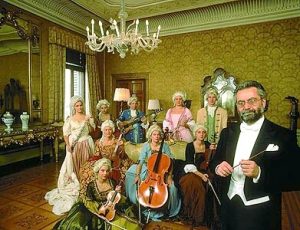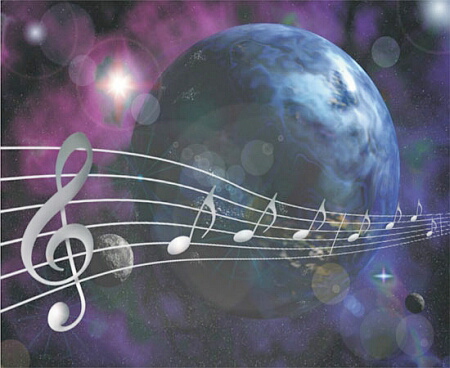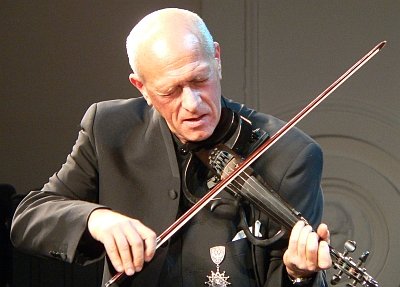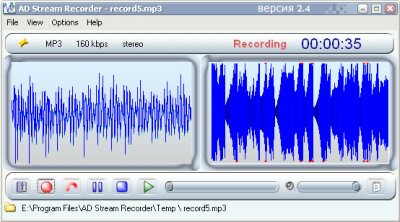What is rondo
 The constant main theme — refrain — is like a chorus, side themes — episodes — are in essence solos. The number of episodes can be from two or more (as indicated by the points in the scheme). Rondo is an old form. It comes from round-chorus songs with a chorus, which was repeated without change, and only verses, but not melody (A B A B1 A B2 A … A), were updated in the song. In professional music – this is one of the most common forms. In medieval France, troubadours and truvera composed rondo-shaped poems and music. Medieval musical and poetic rondo have a special structure that does not coincide with the general scheme given above, but it is also based on the return of the refrain. They were composed as monophonic or three-voice compositions and performed with accompaniment of instruments.
The constant main theme — refrain — is like a chorus, side themes — episodes — are in essence solos. The number of episodes can be from two or more (as indicated by the points in the scheme). Rondo is an old form. It comes from round-chorus songs with a chorus, which was repeated without change, and only verses, but not melody (A B A B1 A B2 A … A), were updated in the song. In professional music – this is one of the most common forms. In medieval France, troubadours and truvera composed rondo-shaped poems and music. Medieval musical and poetic rondo have a special structure that does not coincide with the general scheme given above, but it is also based on the return of the refrain. They were composed as monophonic or three-voice compositions and performed with accompaniment of instruments.
What is rondo (rondo)
Since the XVII century. Rondo (with the ABAC A … A scheme) is widely used in opera, ballet and instrumental music. Apparently, the first rondo sample in the opera is found in the prologue of the opera Orpheus K. Monteverdi, which is built on the alternation of orchestral playing (riturnel) and the music of Muza, i.e., alternating instrumental refrain with several vocal episodes. French composers F. Couperin, J.-F. Rameau, L.C. Ducken wrote small pieces for harpsichord in the form of rondo with program titles (“Reapers” Couperin, “Venetian” Rameau, “Cuckoo” Daken). These plays are characterized by subtle sound image, grace, grace, dance rhythms. Refrain and episodes are miniature, their number ranges from 5 to 17 and more. By the nature of the episodes are close to the refrain and rather complement, set off it, rather than contrast.
In the works of J. Haydn, W. A. Mozart, L. Beethoven, rondeau is a typical form of the finals of sonata-symphonic cycles, only occasionally an independent piece. In the finals, the character of the music is usually song-dancing, with a touch of humor. But they also contain works of lyric, in-depth content (rondo a-minor for Mozart’s piano). New in the Rondoen classics were the emphasized contrast between the refrain and the episodes, the strict limitation of five widely developed parts.
Rondo in the work of composers of subsequent generations is distinguished by great freedom: many-part revival is born in it, the refrain may change when returning, the richness of figurative contrasts borders on kaleidoscopic character (R. Schumann’s Vienna Carnival). Individual plays, parts of a sonata-symphonic cycle or suites, romances (The Sleeping Princess by A. P. Borodin), opera arias, (Rondo Farlaf from the opera Ruslan and Lyudmila by M. I. Glinka), opera scenes are written in the form of rondo. (scene of music-making from the opera “Duenya” by S. S. Prokofiev), episodes of ballet music (fourth picture in the ballet by I. F. Stravinsky “Petrushka”).
The rondo principle gives many possibilities. First of all, this is extraordinary clarity and symmetry of the structure, its completeness and stability due to the repetition of the refrain. At the same time, rondo has remarkable possibilities for contrasts of various kinds (between refrain and episodes). In addition, it is important to be able to saturate the entire structure with development, although at the same time some other principle of shaping is added to the rondo principle, which partly suppresses the first one. Rondo form perfectly combines unity and dynamism.
The principle of rondo includes many forms of various lengths and designs. In addition to independent pieces or parts of cycles, the principle of rondo often penetrates into other forms (for example, rondo-sonata). According to the rondo principle, an entire operatic stage can be written (Introduction from “Ruslan and Lyudmila” by Glinka – choral fragments form a kind of refrain).
Rondo Sonata is a musical form of a class of stable mixed forms, with features of the rondo and sonata forms. The form consists of three main sections, in which the extreme sections (both or one of them) are built according to the rondo principle, and the middle one is a development borrowed from the sonata form.
The rondo form is related to the old concert form (by its principle of repeatedly holding the theme and alternating it with other material). However, it is not a variety of rondo due to the scale of changes to which the main theme is exposed, and its development uncharacteristic for rondo.
Rondo, in modern terms, has a very diverse application. It can be used more traditionally (the final of the cycle), or more freely – for example, an independent miniature (some of Chopin’s nocturnes – as the transformation of the slow part of the cycle into an independent play), an independent vocal play (Borodin. “Sea”), according to the rondo principle large structures (Introduction from Ruslan and Lyudmila by Glinka).
Changing and figurative content rondo. Now it can be ecstatic music (“Pagan dance of the Kashcheev kingdom” from “The Firebird”, the final of Stravinsky’s Sacred Spring), dramatic and tragic (Taneyev. Minuet). Although the traditional lyrical sphere is preserved (Ravel. “Pavana”).
The classical unification of form disappears, its individualization greatly increases.




